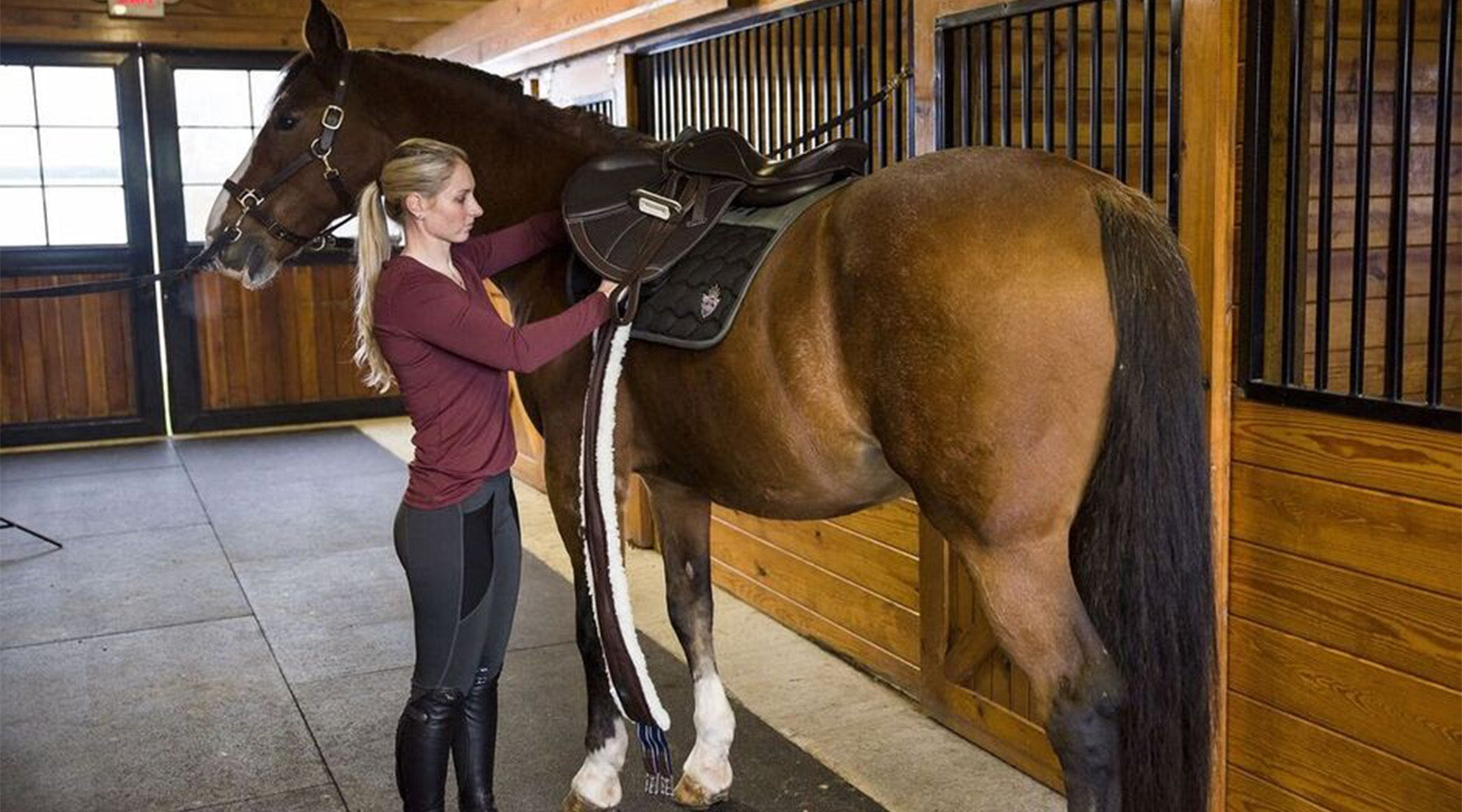The most necessary pieces of tack an English rider must have: a bridle, saddle with pad(s) and the girth. There are many different types of saddles and bridles, all differing in shape, hardware, leather type, features and price. There are lots of options to choose from, all depending on the conformation and size of your horse, budget and details. The same goes for girths too! The girth sees just as much action and contact with the horse as the bridle and saddle.
What is a girth used for?
Often times, the girth is regarded as just a strap that holds the saddle in place on the horse’s back, which it does, and it affects much more than that. The function of the girth, other than stabilizing the saddle, can act as a connection for martingales, assist in holding the saddle pad in place as well as assist in correct saddle position and fit.
Just like saddles and bridles, girths come in a multitude of sizes, shapes and materials. Girths are available as “anatomical”, leather, string, synthetic material, fleece, neoprene, synthetic moisture-wicking materials, and others. Picking the right girth boils down to your horse’s skin and conformation.
English girths come in a range of sizes, accommodating dressage or close contact and all purpose saddles. Dressage and close contact/all purpose saddles require different girth lengths due to flap length and billet length. Dressage girths are much shorter to prevent the buckles from impeding the comfort of the rider’s leg that should hang freely and relaxed around the horse’s barrel and are widely available in sizes 22-32 in 2-inch increments. Long girths are generally available in 36-56 inches long.
Both short and long girths are widely available in multiple materials.
How to choose the right Girth?
First, knowing the differences and similarities between girth types and materials is key to choosing an appropriate girth for your horse.
Breathability is most important because excessive heat can be detrimental to soft tissues that lie beneath the skin. It is also important for dissipating moisture. A build-up of moisture can cultivate the overgrowth of bacteria, which can lead to uncomfortable rashes and skin infections.

Girths that come in different shapes often feature a curved style that is said to cut around the elbows and release pressure from the sternum and rib cage. Girths are also available on either both elasticated sides or just one. This is for even comfort and pressure on either side and can allow for the rib cage to expand and collapse in response to inflating and deflating lungs.
Leather: Leather has been a very popular choice for girth because of its breathability, long life, traditional look and flexibility. Since leather is made from the skin of once-living animals, it is porous and able to expel heat and moisture, which gives it major points for comfort. Leather girths are also almost always available in other colors to match the rest of your tack collection-- points for the show ring.
Although, leather girths can mold to the horse’s anatomical features, leather (especially when moist from sweat) can pull and pinch at the skin, creating uncomfortable sores. To counteract this, fleece covers can be bought to protect the horse’s skin and provide comfort, although this does not allow for total moisture and heat escape. Leather also stretches over time, skewing the size; take this into consideration when measuring for a leather girth.
Style and Types of Girth
Fleece Girths: In recent years, fleece girths have been accepted in the show ring because of the comfort they provide the horse. Some fleece-lined girths feature other properties such as CoolMax that allows moisture to be pulled away from the skin. Fleece can be found as detachable or sewn in. In any case, take care that the fleece is cleaned and dried regularly.

String Girths: String girths can be great for airflow and can be much more comfortable for some horses as well as fight slippage. String girths can often be machine washable as well, this is a great point as girths can be difficult to clean.
Synthetic Girths: Man-made materials are often inexpensive and have very low maintenance. Depending on the material, such as neoprene, synthetic girths can often be some of the most comfortable for your horse, but there's a trade-off. Synthetic materials can heavily hold heat in, and manifest bacterial growth.
How Do You Measure Girth Size?
Now that you know what type of girth you want, you’ll need to find your horse’s size. To find your horse’s girth measurement, simply put on the saddle and pads as you normally would and measure from the middle height of the girth billets, around the barrel of the horse where the girth will usually lay up to the middle height of the girth billets on the other side. This should give you a good rule of thumb to work off of.
AVERAGE GIRTH SIZE CHART
This measurement could change due to the amount of elastic used or not used, shape and material. Adjust measurement according to these details. Depending on how many saddles you have, your horse may need multiple girths to correctly and comfortably fit each saddle. Many different girth brands measure slightly differently, so make sure the measurement truly matches up before you make a decision.



